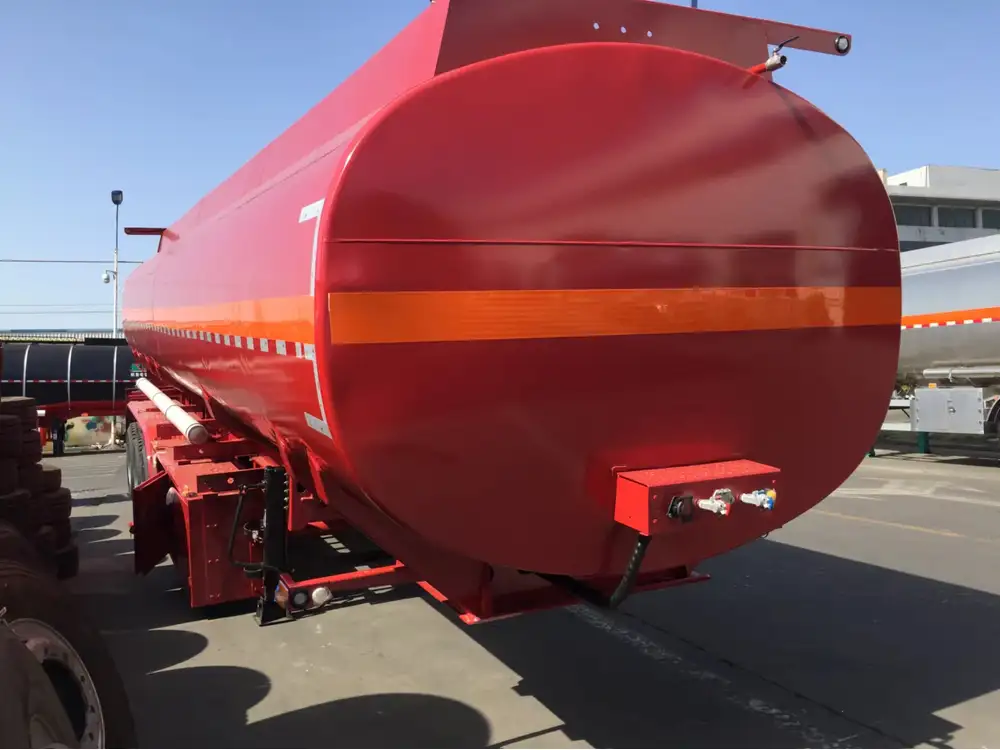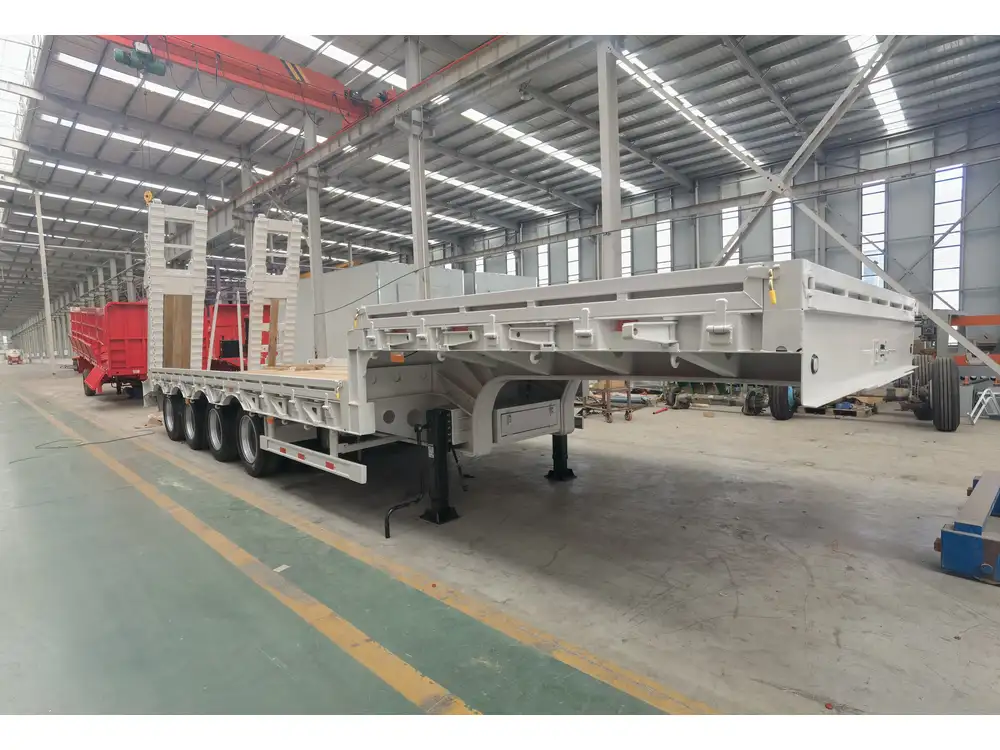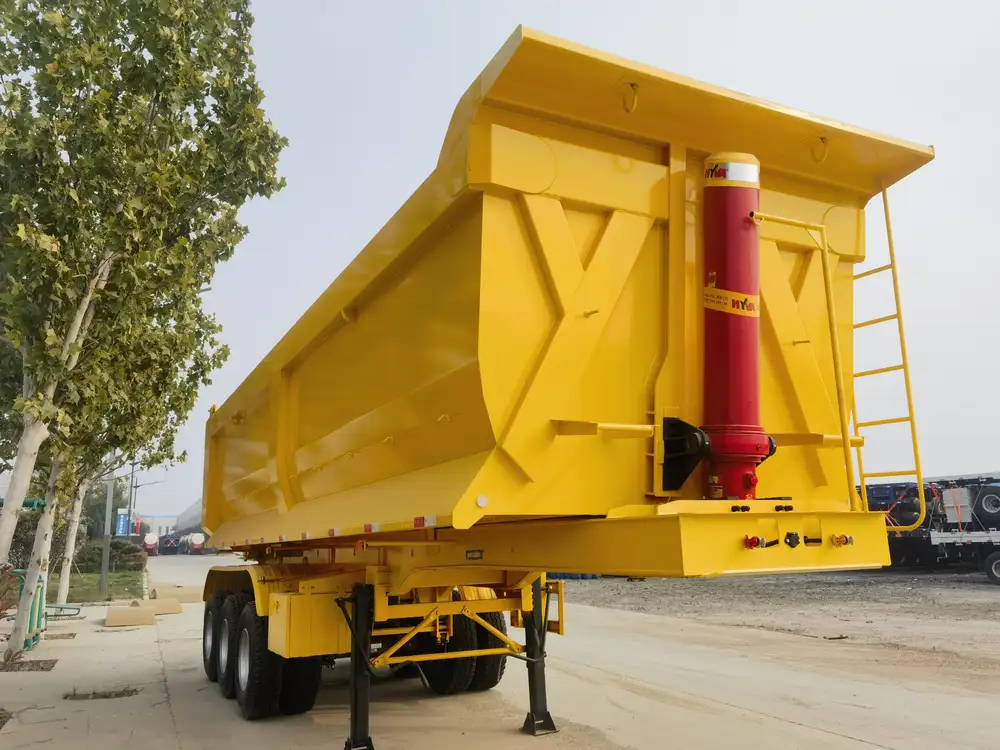Understanding A-Frame Flatbed Trailers
A-frame flatbed trailers are indispensable in the realm of transportation, providing a solution for hauling a variety of cargo with efficiency and safety. These trailers are characterized by their unique frame construction which enhances stability and weight distribution, allowing them to accommodate heavier loads. The design inherently lends itself to strength and durability, making these trailers an ideal choice for manufacturers, distributors, and retail companies.
Construction and Design Features
| Feature | Description |
|---|---|
| Frame Material | Typically constructed from high-strength steel or aluminum for improved durability. |
| Decking | Wood or steel decking, often treated to resist wear and weather elements. |
| Axles | Generally equipped with tandem or triple axles to evenly distribute weight. |
| Suspension | Variable suspension options, including leaf spring and air ride, catering to different loads. |
| Towing Capacity | Ranges between 10,000 lbs to 25,000 lbs, depending on specifications and configuration. |
| Brake Systems | Equipped with electric or hydraulic brakes for enhanced stopping power. |

Benefits of A-Frame Flatbed Trailers
1. Versatility
A-frame flatbed trailers are renowned for their versatility. They can transport everything from construction materials to vehicles and are adaptable for both residential and commercial purposes.
2. Stability
The A-frame design optimizes weight distribution, promoting stability even on uneven road surfaces. This is crucial for minimizing risks during transport.

3. Ease of Loading and Unloading
The flat, unobstructed deck allows for easy loading and unloading of cargo. Additionally, many trailers come with optional ramps or rails to facilitate operations.
4. Customization
Manufacturers often provide customization options, allowing businesses to tailor trailers to their specific needs, including length and weight capacity.
Applications of A-Frame Flatbed Trailers
Understanding where and how A-frame flatbed trailers are utilized can provide insights into their importance across industries.

Construction Industry
In construction, these trailers cater to transporting heavy machinery, building materials, and even construction debris. Their robust nature ensures that they can handle the rigors of job sites.
Automotive Industry
In the automotive sector, A-frame flatbed trailers play a crucial role in moving vehicles between dealerships or transporting vehicles for auctions. The design minimizes risk during transit.
Landscaping and Agriculture
Landscapers and agricultural professionals often use these trailers to transport plants, soil, farm equipment, and other landscape materials, effectively enhancing logistical capabilities.

Choosing the Right A-Frame Flatbed Trailer
Selecting the right trailer can be daunting. However, understanding your needs and specifications can streamline the process.
Key Considerations
Load Capacity
- Assess the weight and dimensions of the cargo.
- Opt for a trailer that exceeds your maximum expected load.
Material and Durability
- Select materials that can withstand specified wear and environmental factors.
- Consider galvanized vs. painted steel, which may affect the longevity of the trailer.
Suspension Type
- The type of suspension can significantly affect ride quality and load handling. Evaluate between options based on your cargo type.
Braking System
- Depending on the hauling requirements, choose between electric brakes for lighter loads or hydraulic systems for heavier uses.
Comparison of A-Frame Flatbed Trailers
| Feature | Standard A-Frame Flatbed | Heavy-Duty A-Frame Flatbed |
|---|---|---|
| Typical Load Capacity | 10,000 lbs | 25,000 lbs |
| Frame Material | Mild steel | High-strength steel |
| Axle Configuration | Tandem axles | Triple axles |
| Braking System | Electric brakes | Hydraulic brakes |
| Ideal Use Cases | General cargo | Heavy machinery and equipment |

Maintenance Tips for A-Frame Flatbed Trailers
Regular maintenance can extend the service life of your A-frame flatbed trailer. Here are some fundamental tips:
1. Routine Inspections
Conduct regular inspections of the frame, deck, axles, and brakes. Look for signs of wear, rust, or damage, particularly in high-stress areas.
2. Lubrication
Ensure all moving parts, such as axles and suspension components, are properly lubricated. This minimizes friction, thereby preventing wear and enhancing performance.

3. Tire Maintenance
Regularly check tire pressure and condition. Properly inflated tires improve fuel efficiency and ensure better handling during transport.
4. Brake System Checks
Inspect your braking system frequently. Replace worn-out brake pads and ensure brakes are responsive to maintain safety.
Legal Considerations for A-Frame Flatbed Trailer Use
Understanding the legal requirements surrounding the use of A-frame flatbed trailers is essential to comply with road safety regulations and to avoid penalties.

1. Weight Limits
Each region may have specific limits on load capacity for trailers. It is vital to know these regulations to prevent overloading, which can lead to accidents.
2. Licensing Requirements
Depending on the weight and dimensions of the trailer, operators may need special licensing or endorsements. Verify local regulations to ensure compliance.
3. Insurance
A comprehensive insurance policy can protect your investment in case of accidents, theft, or damage. Evaluate your needs and find policies that cover liabilities associated with trailer use.

Frequently Asked Questions about A-Frame Flatbed Trailers
What is the average cost of an A-frame flatbed trailer?
The price varies significantly based on construction, size, and features. On average, a standard A-frame flatbed trailer can range from $3,000 to $10,000.
Can A-frame flatbed trailers be customized?
Yes, manufacturers often provide customization options for deck length, height, weight capacity, and additional features like toolboxes or railings.

What maintenance should I perform regularly?
Regular maintenance should include inspecting the trailer structure, lubricating moving parts, performing brake checks, and ensuring tire integrity.
How can I improve fuel efficiency when towing?
Maintaining proper tire pressure, ensuring the trailer is not overloaded, and keeping aerodynamic principles in mind can significantly enhance fuel efficiency.
Are A-frame flatbed trailers suitable for off-road transport?
Many A-frame flatbed trailers are designed for rugged use; however, specific configurations and suspensions are better suited for off-road conditions.

Conclusion
A-frame flatbed trailers stand as a cornerstone in transport solutions across diverse industries. Their unique design, coupled with an array of customizable options, positions them as a preferred choice for logistics and transportation needs. Understanding their advantages, applications, and maintenance requirements allows companies to make informed decisions that enhance operational efficiency.
Investing in an A-frame flatbed trailer means prioritizing durability, stability, and versatility. With regular maintenance and adherence to legal requirements, these trailers can significantly contribute to your transport capabilities and overall business success. By incorporating these insights, we invite you to explore your options, ensuring that you find the perfect A-frame flatbed trailer to meet your unique needs.



